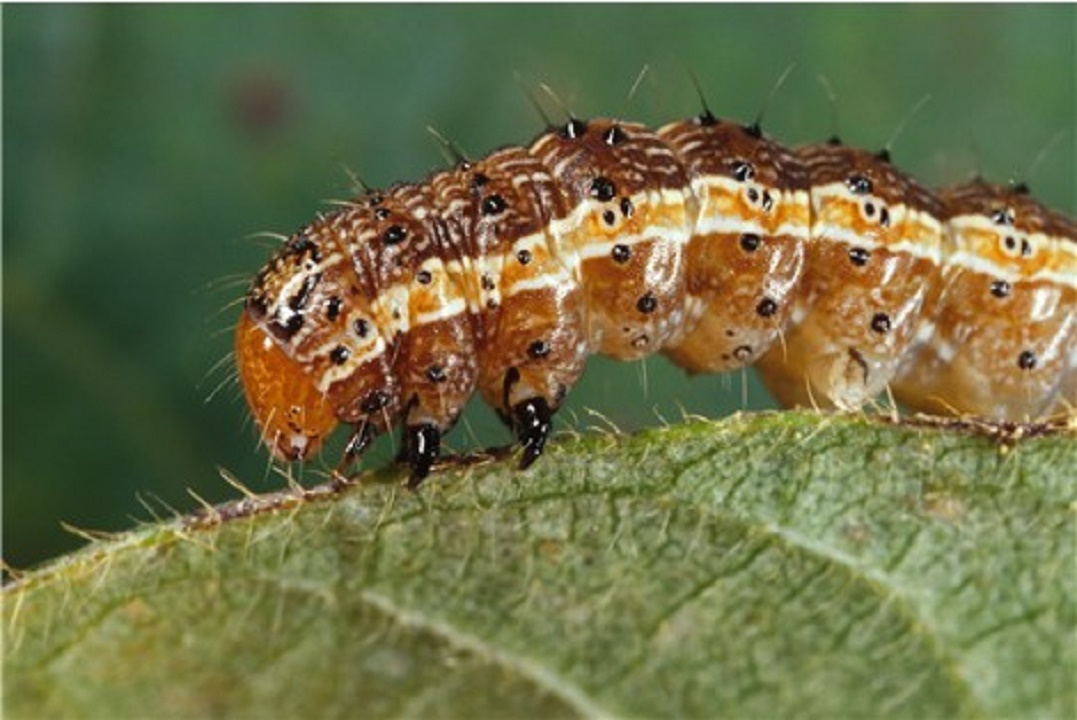Double whammy on African farmers : Fall Armyworm after Locust Swarms
Fall Armyworm (FAW) which reportedly migrated from the USA primarily infests maize crops, the main food crop in various countries throughout the African continent. The destruction of the maize crop would bring acute poverty and starvation in the region.

- Country:
- South Africa
Though they are finding it tough to battle the menace of locust swarms, the spread of Fall Armyworm (FAW) or Spodoptera frugiperda has posed another challenge. After damaging maize crops in South Africa, these worms are fast spreading in neighboring countries. The region which has its own set of agricultural problems is finding it tough to fight out the worm reportedly arrived from America along with imports in 2016-17.
The attack of FAW has come at a time when most of the African countries are facing the attack of locust swarms. In some countries such as Uganda and Kenya, the situations went out of control and the army was deployed to battle the locusts. According to a recent forecast by the Food and Food Organisation Agriculture (FOA), after Southern Africa, FAW would spread into the rest of the African continent. The FAO has recently provided training to farmers in South Africa to fight against the FAO. However, the problem is manifold. Besides poverty among the farming community across the boundaries, lack of resources at the national level and inefficient mechanism to reach out the farmers’ community are also among the main challenges.
In a report, the ‘Global platform: FAW Monitoring & Early Warning System (FAMEWS)’ has revealed that countries such as Mozambique, Guinea, Malawi, Benin, Botswana, Rwanda, Ghana, and South Africa have suffered ‘high degree’ of damage in Maize crops. Besides, Madagascar and Tanzania have reported moderate damage to Maize. “Kenya is presently facing Armyworm attacks in its cowpeas and Mozambique face this in its beans crop,” said the report. The FAW survives on a wide range of 80 crops but its maize crop is its main host on which it breeds at very high speed. The insect is native to tropical and subtropical regions of the Americas. It damages crops in its larval stage.
Scale of Damage
Dr. Gerhard Verdoorn, CropLife South Africa’s operations, and stewardship manager informed that serious damage was reported in South Africa in the 2019-20 crop season. Crop damage due to FAW infestation was reported from Badplaas and Carolina areas in Mpumalanga, near Magaliesburg in Gauteng, and as far as Piet Retief in northern KwaZulu-Natal, among other areas. Besides South Africa, the insects have hit about 144,000 hectares of crops in Malawi affecting 467,000 farmers in 28 farming districts. This is three times high in comparison to FAW infestation in Malawi in 2017. The reports on infestations of FAW and crop damages are also coming from Namibia. In addition to that Egypt, Sudan, and their neighboring countries are also reporting crop damage.
International Efforts
FAO has identified five crop pests - Tuta absoluta; Fall Armyworm (FAW), fruit fly; maize lethal necrotic diseases; and banana fusarium wilt; and came out with a plan in collaboration with Southern Africa Development Community (SADC) under the program titled ‘Support towards the Operationalisation of the SADC Regional Agriculture Policy (RAP)’ for Southern Africa. The European Union (EU), has also committed 9 million Euros for this program to support southern Africa. In pursuance to this program, the training of various stakeholders was recently organized in South Africa to support the farmers in fighting against the crop pests.
The infestation of deadly crop pests has come at a time when agriculture in Africa is already fighting for its sustainability and farmers are facing a barrage of problems.
In upcountry areas shops of agrochemicals and fertilizers are rare and the purchasing power of farmers is too low to buy expensive chemicals. The agriculture in these areas is primarily rain-fed which is often suffered by drought and heavy rainfall. In these circumstances, the attack of pests has come as a do or die situation. The arrival of FAW has caused immense concern among agricultural experts due to the potentially huge amount of damage that these pests might cause to African food crops. According to experts, the changing climate has made the weather conditions favorable for pests which have caused existential problems for the farming community in Africa.
The Bottom Line
The farming in Africa requires a multi-pronged approach wherein the farmers are aided with quality seed, irrigation, pesticides, crop management, and finally selling it into the market. There is great need to ensure the farming is not dependent on natural calamities and season. Nobody would deny that fighting the problems such as locust swarms and FAW is beyond the capacity of individual nations. There is a great need to form international associations to fight such menace. The pests like locusts and FAW migrate from one country to another as per the change of season. Thus, the country having a better season for their breeding has the highest risk of being attacked. Therefore, advance planning and preventive measures are imminent for pest management.
(Disclaimer: The opinions expressed are the personal views of the author. The facts and opinions appearing in the article do not reflect the views of Devdiscourse and Devdiscourse does not claim any responsibility for the same.)
(Disclaimer: The opinions expressed are the personal views of the author. The facts and opinions appearing in the article do not reflect the views of Devdiscourse and Devdiscourse does not claim any responsibility for the same.)
- FIRST PUBLISHED IN:
- Devdiscourse News Desk
ALSO READ
Revoking Article 370 has uprooted breeding ground for terrorism from valley: CM Yogi
DEWA highlights its sustainability efforts at Abu Dhabi Sustainability Week
Mixed efforts to achieve energy goals highlighted at the end of Sustainability Week
COLUMN-Oil bulls lack conviction about sustainability of higher prices: Kemp










